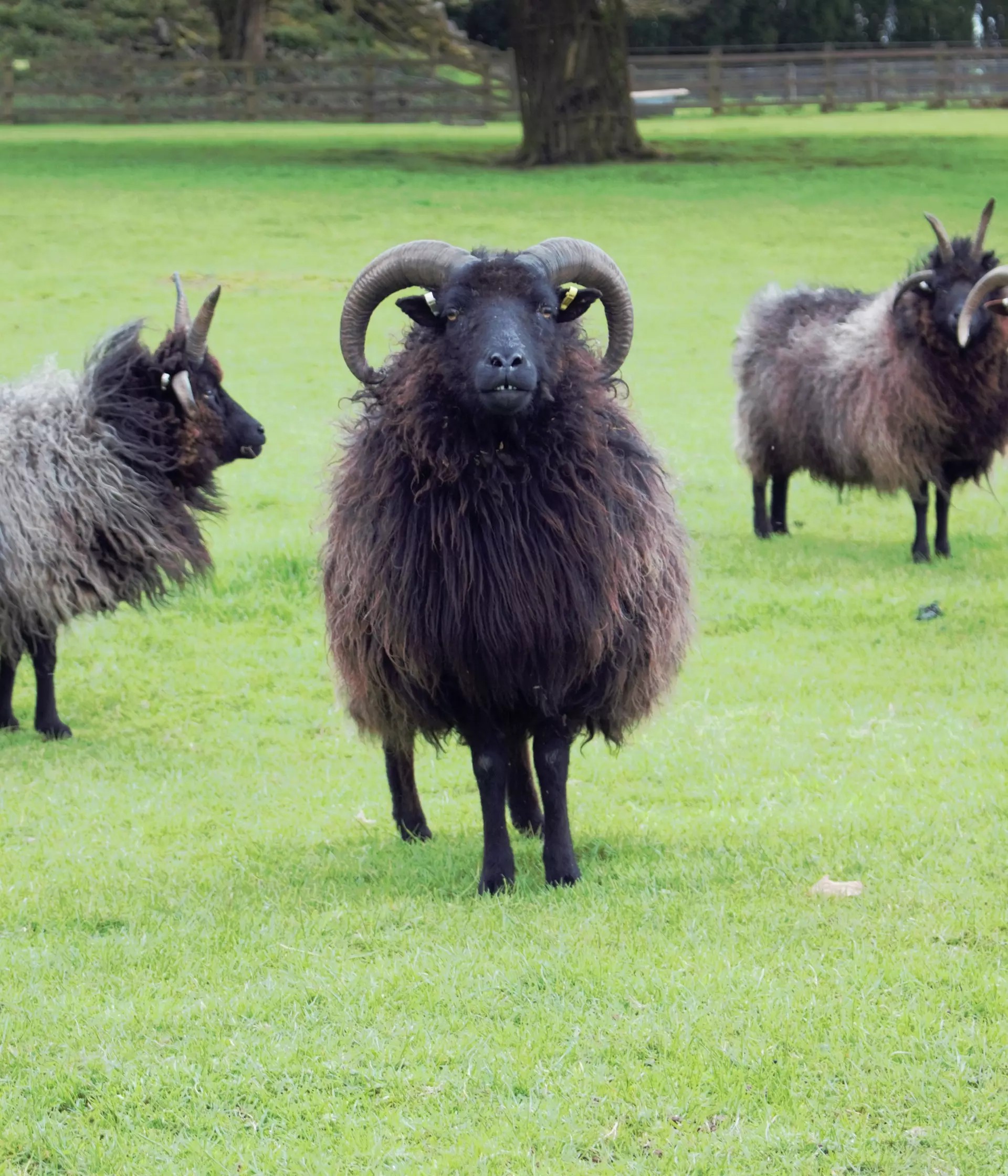
About our Hebridean sheep
We have 3 male Hebridean sheep here at the Hullabazoo Farm named 'Mc Cloud', 'Wallace' and 'Bam'.
Hebridean sheep facts
- Hebridean sheep wool is perfectly suited to the damp climate and coastal weather of the Hebrides. The have a double coat of fleece, the lower coat being warm and insulating with the top coat being more coarse and waterproof. They can get rid of rain from their fleece with a quick shake.
- Hebridean sheep are such effective browsers that they are an ideal breed for using to control scrub land and are great at helping with native wildlife conservation. They have to be securely contained by fences though as they have no problem browsing all the way through hedges!

What do Hebridean sheep look like?
Hebridean sheep are known for their distinctive and striking black fleece, although it can fade to brown in the sun and become grey with age. They have no wool on their face or legs, which are covered with glossy black hair. Both rams and ewes typically have curved horns, some Hebridean sheep may even have two or more pairs of horns.
What do Hebridean sheep eat?
Hebridean sheep are grazer who's diet consists of grasses and herbs, they'll even eat some rougher vegetation like brambles that other breeds might avoid.
Where are Hebridean sheep from?
Hebridean sheep are named after the islands off of the coast of Scotland but their exact origins are unclear. They have been called St Kilda sheep in the past but they aren't actually from the St Kilda island, it's believed they are descended from ancient breeds that roamed the Scottish islands for centuries. Today, Hebridean sheep can be found throughout the UK.
Don't forget to come and meet our fleecy friends on your next trip to Whipsnade Zoo.
